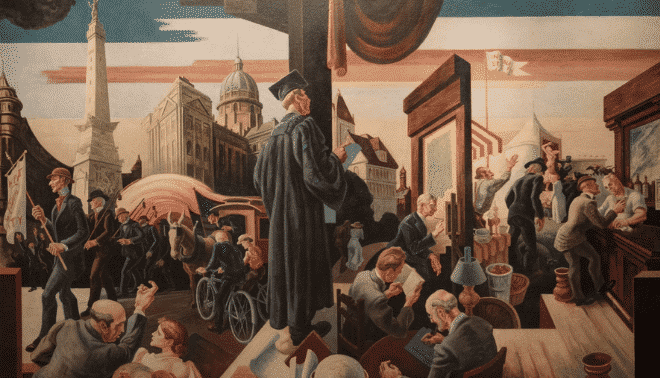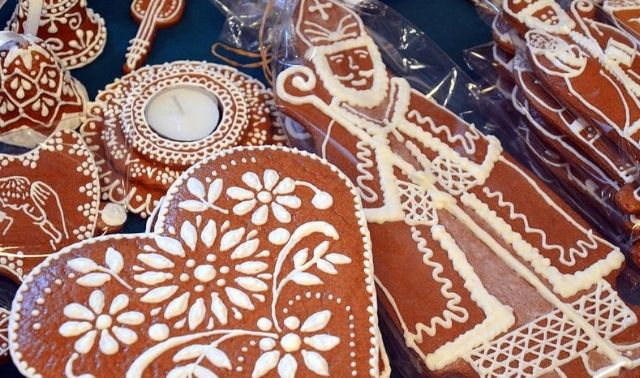Sign up for the Family Tree Newsletter Plus, you’ll receive our 10 Essential Genealogy Research Forms PDF as a special thank you!
Get Your Free Genealogy Forms
"*" indicates required fields

Despite the excessive heat output by the exposed compressor and the use of corrosive, poisonous chemicals for evaporative cooling, the Monitor sold more than a million units. As New Deal loans and rural electrification encouraged the wiring of America in the 1930s, refrigerators became ubiquitous household appliances. Their adoption changed the way we ate and shopped, popularizing frozen foods and replacing frequent trips to the corner grocery with weekly stock-ups at the supermarket.
Ice, ice baby
Refrigeration arrived in America with the colonists at Jamestown, where archeologists have found a seven-foot-deep pit dug to hold ice. In the 1780s, the president’s house in Philadelphia featured a stone-lined octagonal ice pit. Ice was first shipped commercially from New York City to Charleston, SC, in 1799, although most of the delivery melted en route. Bostonian Frederic Tudor, the “Ice King” of the early 1800s, used sawdust, wood shavings and other cheap but effective insulation to slash the melting loss to less than 10 percent.
Cool and compressed
Efforts to replace natural ice with artificial refrigeration date to 1748, when William Cullen demonstrated the principle of heat absorption through evaporation at the University of Edinburgh. Refrigeration depends on the fact that an evaporating liquid extracts heat from its surroundings—think of how chilly you feel getting out of the pool. Refrigerators release liquid from a condenser into a large space called the evaporator, where the liquid “refrigerant” expands and evaporates. Mechanical pressure then forces the gas back into the condenser in liquid form, and the cycle repeats.
Cullen’s experiment evaporated ether in a partial vacuum, creating a small amount of ice as the ether boiled away. Subsequent efforts used ammonia, alcohol, sulfur dioxide and methyl chloride as refrigerants. Another American, Oliver Evans, designed but not did actually build a vapor-based refrigerator in 1805. Other inventors worked to make the technology practical, building on the 1820 discovery by English scientist Michael Faraday that liquefied ammonia could be used as a coolant.
In 1835, a colleague of Evans, Jacob Perkins, patented a vapor-compression refrigeration system using ammonia. John Gorrie, a US physician, built a similar machine in 1842 to make ice to cool yellow-fever patients.
In Germany, Carl von Linde founded an Eismaschinen (ice machine) company in 1870, using his patented technology for liquefying gas.
Beer and meat
Because early refrigerators were big and expensive, they were initially used in business locations. S. Liebmann’s Sons in Brooklyn installed the first commercial refrigerator in a brewery in 1870; within 20 years, almost every major brewery had one. Next to adopt refrigeration was the meatpacking industry, beginning in Chicago in 1900. By 1914 almost all US packing plants had ammonia-compression systems.
Home units typically required the installation of equipment in a basement, with the actual cold box in the kitchen. One 1922 model with a nine-cubic-foot compartment cost $714—half again as much as a Model T Ford.
Alfred Mellowes developed a self-contained home refrigerator with the compressor on the bottom as early as 1914. William C. Durant, a General Motors executive, bought him out in 1918. He founded the Guardian Frigerator Company—soon renamed Frigidaire—in Fort Wayne, Ind. That same year, Kelvinator introduced the first refrigerator with automatic controls, and briefly claimed 80 percent of the market.
Freon and beyond
These refrigerators relied on toxic chemicals as coolants, which sometimes caught fire or leaked out, to fatal result. In the 1890s, Frédéric Swarts had synthesized a new chemical from carbon, chlorine and fluorine called chloro?uorocarbons (CFC).
A team at General Motors, which now owned Frigidaire, saught a safer refrigerant and hit upon CFCs in 1928. The scientists improved the synthesis of CFCs—trademarked under the name Freon—and demonstrated the compounds’ stability and nontoxicity. (Not until 50-plus years later were CFCs identified as a culprit in the depletion of the atmospheric ozone layer. The 1987 Montreal Protocol set out international steps to ban their use.)
Freon-based appliances made it easier to freeze, too. General Electric introduced the first refrigerator with separate compartments for cooling and frozen food in 1939, and the first two-door unit in 1947. Stand-alone freezers were introduced in the 1940s, spurring growth in sales and variety of frozen foods (including “TV dinners”).
Learn about more inventions and technology that revolutionized your ancestors’ lives in the Best of History Matters e-Book from Family Tree Magazine.
 |
Refrigerator History Timeline
1000 BCE | Chinese cut and store ice to cool perishable foods.
1748 | William Cullen demonstrates principle of artificial refrigeration.
1799 | Ice shipped from New York City to Charleston, mostly melts.
1803 | Thomas Moore coins the term “refrigerator.”
1833 | Frederic Tudor reaches Calcutta with 100 tons of ice from Boston.
1834 | Jacob Perkins, sometimes called the “father of the refrigerator,” patents a cooling cycle using compression.
1842 | Dr. John Gorrie makes ice to cool yellow-fever patients.
1870 | New York brewery installs a refrigerator.
1876 | Carl von Linden develops process of liquefying gas.
1914 | Domestic Electric Refrigerator (DOMELRE) introduced to replace the ice in iceboxes.
1916 | Albert Mellowes invents a self-contained home refrigerator.
1927 | GE introduces the Monitor, first popular home refrigerator.
1928 | Freon adapted to refrigeration.
ADVERTISEMENT





